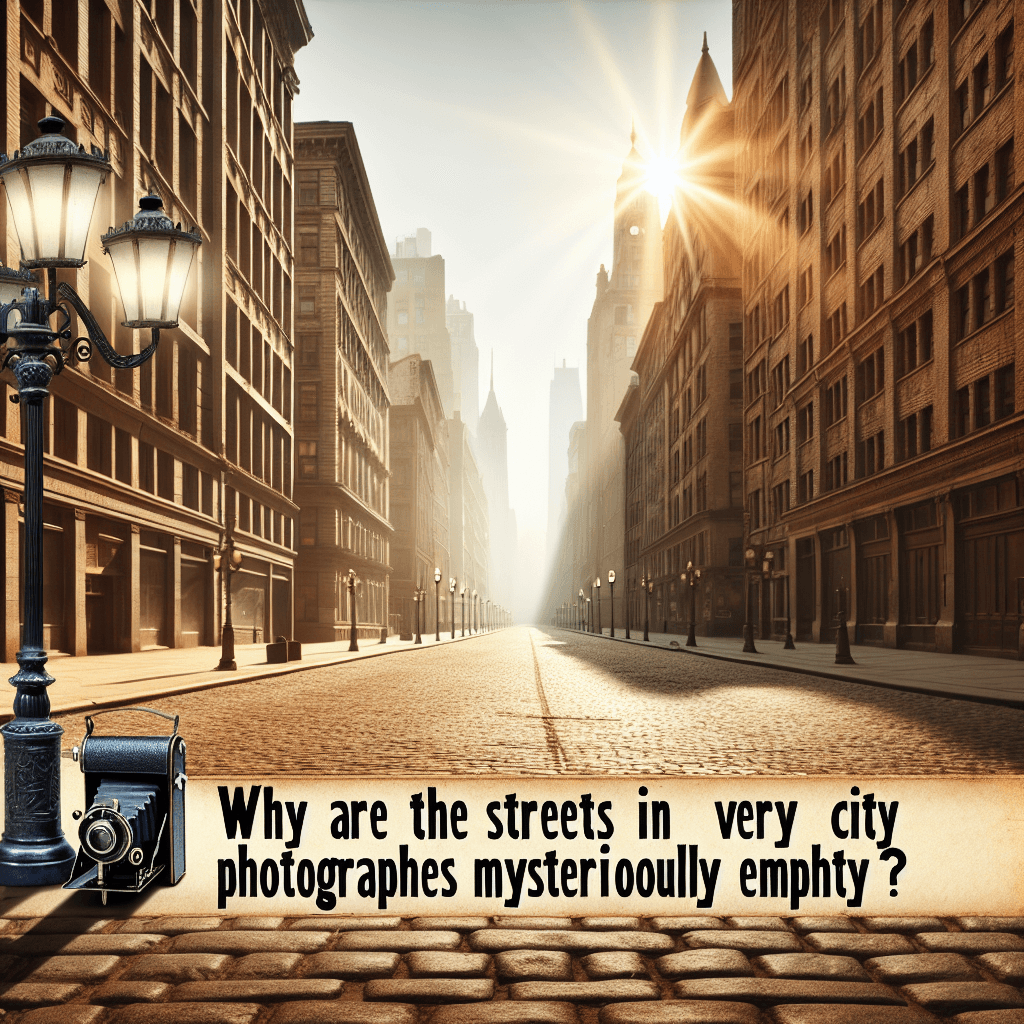Why are the streets in very old city photographs mysteriously empty
Those empty streets in old photos weren't abandoned—they were filled with millions of invisible people, and the reason lies in a secret of the first cameras.


Too Long; Didn't Read
TLDR: Early cameras required extremely long exposure times. Moving objects like people and carriages were too fast to be captured, becoming invisible or just a faint blur, which created the illusion of empty streets.
Ghostly Cities: Why Are the Streets in Very Old City Photographs Mysteriously Empty?
Have you ever peered into a photograph from the 1840s or 1850s, perhaps of a bustling London or Paris street, only to be struck by an eerie silence? The buildings stand in perfect clarity, the cobblestones are sharp, but the people are gone. The streets, which we know were teeming with life, often appear mysteriously deserted. Were these cities ghost towns? Was the photo taken at the crack of dawn? While that's sometimes the case, the primary reason is far more fascinating and lies within the technology of the camera itself. This post will unravel the technical illusion that erased people from the earliest cityscapes, turning bustling metropolises into silent, empty stages.
The Slow Blink of the Early Camera
The central culprit behind these empty-looking streets is a photographic concept called exposure time. In simple terms, this is the length of time the camera's shutter is open, allowing light to hit the light-sensitive surface (in those days, a chemical-coated plate) to create an image. Modern cameras can capture an image in a tiny fraction of a second, freezing a hummingbird's wings in mid-flight.
Early photographic processes, however, were not so swift. The first commercially successful method, the daguerreotype, introduced in 1839, was incredibly slow. The chemical plates used were not very sensitive to light, meaning the shutter had to remain open for a very long time to capture a properly exposed image. How long?
- Early Daguerreotypes (c. 1839-1845): Exposure times could range from 3 to 15 minutes.
- Later Processes (c. 1850s-1860s): Even with improvements, exposures for architectural shots could still take many seconds, or even a full minute, depending on the available light.
A camera with its shutter open for several minutes doesn't just see a single moment in time; it sees an accumulation of everything that happened during that period.
Where Did Everyone Go? The Science of Motion Blur
This leads us to the heart of the mystery. For an object to appear sharp and clear in a photograph with a long exposure, it must remain perfectly still for the entire duration the shutter is open. The grand, unmoving buildings? They registered perfectly on the photographic plate. A parked carriage? It would also appear sharp.
But what about the people walking, the horses trotting, and the carriages rattling down the street? From the camera's perspective, these moving objects were transient blurs. A person walking through the frame might only be in one spot for a second or two before moving on. Over a 10-minute exposure, that person’s presence in any single spot was too brief to leave a significant impression on the light-sensitive plate. As a result, they either became faint, ghostly streaks or, more often, vanished from the final image entirely, leaving no trace.
Perhaps the most famous illustration of this is Louis Daguerre’s 1838 photograph, Boulevard du Temple, Paris. The wide boulevard appears completely devoid of traffic and pedestrians. But a close look at the bottom left corner reveals two figures: a man having his shoes shined and the bootblack polishing them. They are visible because they remained relatively still for the entire 7- to 10-minute exposure, while the rest of the city's hustle and bustle simply moved too quickly to be seen.
The Ghosts in the Machine: Clues of Life
While most people disappeared, you can sometimes spot faint traces of this lost activity if you look closely at early photographs. These "ghosts" are the faint, transparent blurs of figures who didn't move quite fast enough to vanish completely. These ethereal marks are the only remaining evidence of the vibrant life that filled the streets.
Furthermore, photographers of the era were often more interested in capturing architecture than daily life. They would sometimes intentionally shoot in the early morning to minimize the risk of moving objects blurring their carefully composed architectural portraits. It wasn't until photographic technology advanced—with more sensitive chemical emulsions and faster lenses—that exposure times dropped to a fraction of a second, finally allowing photographers to "freeze" the bustling, dynamic life of the city.
Conclusion
The empty streets in the world’s oldest city photographs aren't a sign of deserted cities but a beautiful, haunting artifact of technological limitation. The slow, patient gaze of the early camera could only capture the permanent and the stationary, effectively erasing the fleeting, transient motion of human life. So, the next time you look at one of these silent cityscapes, remember you are not seeing an empty world. Instead, you are witnessing a scene so full of life and movement that it simply became invisible to the slow, blinking eye of history's first cameras.


